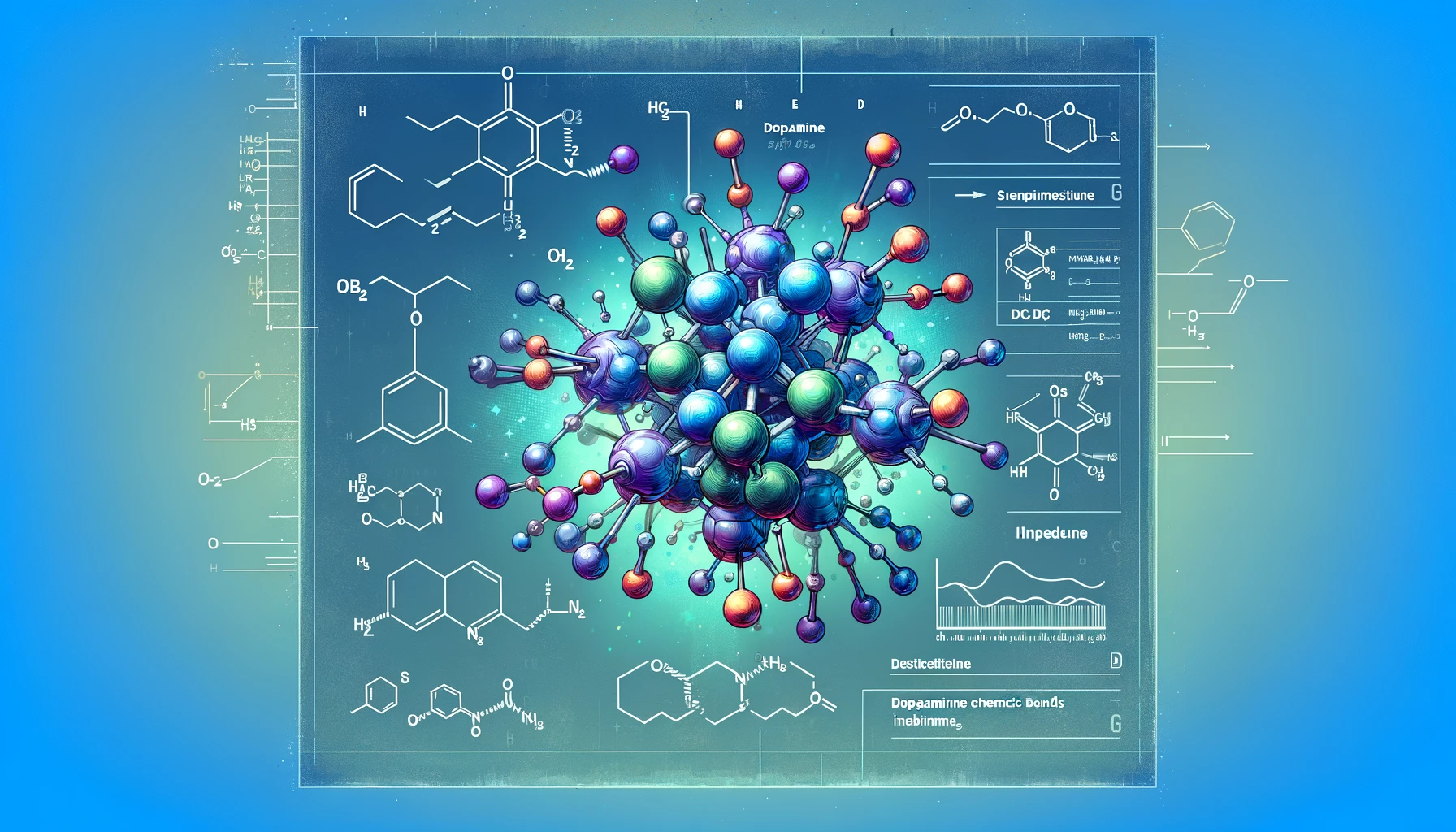Dopamine has a reputation that normally precedes it…
That’s because dopamine is a fascinating little molecule which has earned itself quite the reputation as the “feel-good” neurotransmitter of death as it’s been associated with drugs like Heroin, porn, crack, obesity, video game addictions, cigarettes, and social media.
In this blog, we aim to approach the dopamine molecule with a healthy dose of curiosity as we explore the science behind dopamine and its role in our daily lives.
Whether you’re a novice just exploring what dopamine does, or if you consider yourself well-versed in your understanding of dopamine, this blog will offer you a fresh perspective as we dive into the complex world of brain chemistry.
We’re shedding light on how dopamine works, and by better understanding how dopamine controls us, we can better understand how to control it.
Is dopamine a problem? Or does it just get a ‘bad rap’??
High Level Overview of Dopamine
Dopamine is a neurotransmitter known for its role in the brain’s reward system. When you experience something rewarding or pleasurable, such as listening to music with a catchy beat or taking certain drugs, dopamine is released. This release of dopamine can enhance the perceived reward value of the experience and motivate you to engage with it further.

On a base level, dopamine is a chemical messenger in the brain that communicates a feeling of a pleasurable experience.
Dr. Nora D. Volkow, who heads the National Institute on Drug Abuse (NIDA), has spent years doing research and has found that dopamine is not only the driving force behind your motivations, but dopamine also drives our ability to learn from positive reward cues, and helps coordinate physical movements in the body.
Dr. Trevor W. Robbins from the University of Cambridge has spent countless hours diving deep into dopamine’s role in the brain, and what he’s found is pretty cool. Dopamine is a key player in your daily decision-making abilities even in subconscious ways such as choosing between a salad or a burger, or ordering take out vs cooking, or exercising or scrolling on social media.
I like to think of dopamine as the conductor of an orchestra, directing emotions, daily behaviors, and your overall sense of well-being on a daily basis.
How does this complex molecule impacts your daily life??…Probably in more ways than you might have imagined !
How is Dopamine Affecting Your Daily Life

What You Eat
According to research conducted by Dr. Kent C. Berridge, an expert in pleasure and reward mechanisms, engaging in pleasurable activities, like eating, prompts the brain to release dopamine which reinforces the behaviors. Regarding diet, dopamine significantly influences food choices.
As you can imagine, foods with high levels of sugars and fats release high amounts of dopamine. Those are also the foods like chocolate and bacon cheese burgers that taste great, (but aren’t necessarily tgreat for you).
Repeated engagement in the activities strengthens neural pathways, making these behaviors, like over indulging with food choice, become near automatic.
The more dopamine releasing activities are performed, the stronger the neural pathways become.
learned behaviors. For example, if a specific food triggers dopamine-induced pleasure, the subsequent craving can manifest automatically.
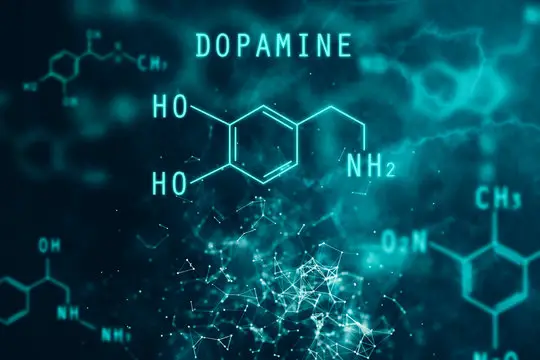
Furthermore, dopamine exerts its control over appetite and satiety, predominantly within brain regions like the hypothalamus, a point underscored by Dr. Nora D. Volkow, an accomplished expert in addiction neuroscience.
Additionally, research by Dr. Wolfram Schultz demonstrates dopamine’s influence on decisions related to food. Dopamine shapes our dietary preferences, regulates our sense of hunger and fullness, and steers the course of our dietary choices, shedding light on the pivotal role of the brain in dictating our eating habits and behaviors.
Your Mood
Dopamine remains a central player in shaping our daily experiences, especially when it comes to regulating our mood. Dr. John Salamone, a prominent figure in behavioral neuroscience, has made significant contributions in this field.
The release of dopamine in the brain, regardless of its trigger, has a profound impact on our emotional state. It leads to feelings of happiness, contentment, and even euphoria.
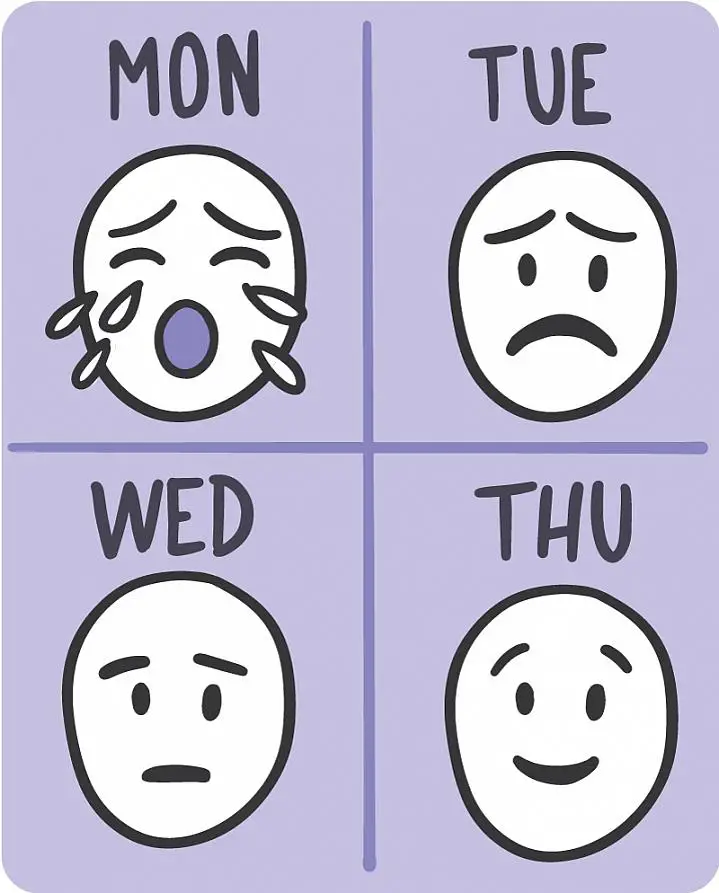
On the flip side, disruptions in dopamine function can contribute to mood disorders. Dr. Michael J. Frank, an expert in computational psychiatry and neuropsychology, has conducted research linking dopamine dysregulation to conditions like depression (“Dynamic Dopamine Modulation in the Basal Ganglia: A Neurocomputational Account of Cognitive Deficits in Medicated and Nonmedicated Parkinsonism,” Frank et al., 2007).
Understanding how dopamine interacts with our emotions provides valuable insights into its role in our daily lives, influencing not only our emotional well-being but also our choices and actions.
Short Term Decision Making
In short-term decision making, dopamine, as studied by neuroscientist Dr. Read Montague (“Neuroeconomics: A Guided Tour of the New Interdisciplinary Research,” Montague et al., 2008), plays a key role. It acts as a motivational force, pushing us towards making choices with immediate rewards or pleasures.
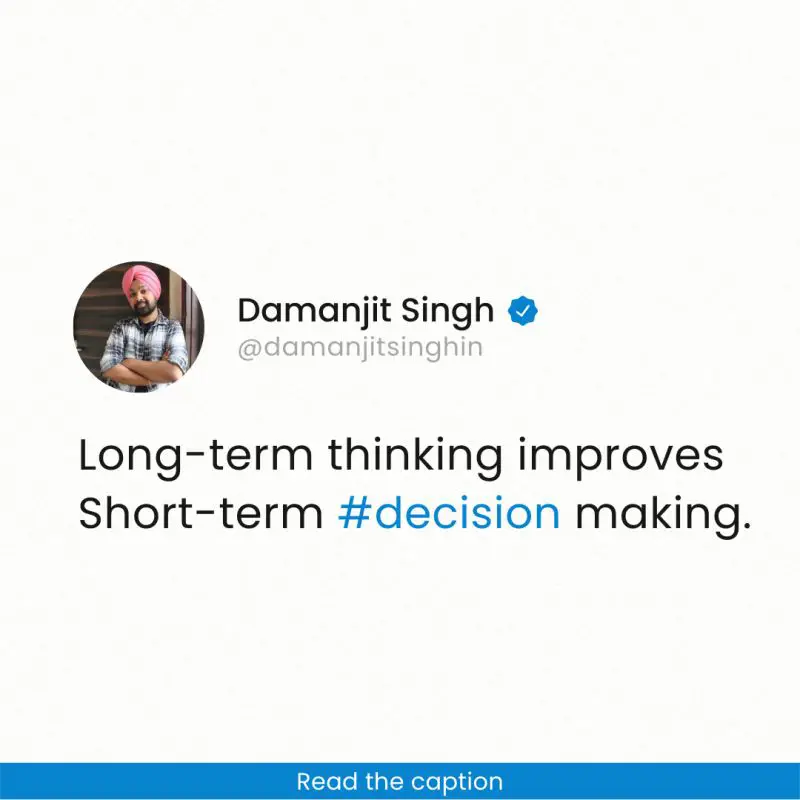
Dopamine’s sway extends beyond mere rewards; it also functions as a compass for our attention. Dr. Wolfram Schultz‘s investigations into dopamine neurons, elucidated in “Neuronal Reward and Decision Signals: From Theories to Data” (Schultz, 2015), reveal that the mere prospect of dopamine-triggered reward redirects our focus toward pertinent cues, inevitably shaping our decision-making processes.
However, it’s worth noting that dopamine imbalances can provoke impulsivity. Excessive dopamine levels may steer us toward impulsive decisions that prioritize immediate gratification over long-term goals.
The takeaway is that dopamine motivates us toward immediate rewards and shapes our attention in short-term decision making, but imbalance can lead to impulsivity. Understanding this aspect sheds light on how it influences daily choices.
How You Spend Your Time
Dopamine does more than just provide pleasure; it significantly influences how we perceive time. When it’s released during fun activities or in anticipation of rewards, dopamine can alter our sense of time, making moments seem to stretch or shrink…This side-effect of dopamine means that our daily routines and priorities might be shaped by how our brain processes time.
If dopamine levels are imbalanced, perhaps due to overstimulation or impulsive behavior, our time management can be affected. We might find ourselves favoring quick gratification over longer, more rewarding tasks, leading to inefficient use of time.
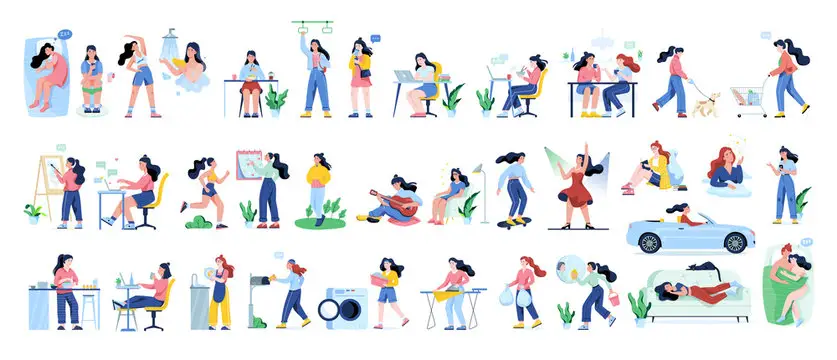
Understanding dopamine’s role in time perception can enlighten us on why certain activities are more engrossing, or why time appears to fly in some situations… This insight is crucial for better time management, helping us recognize when our brain’s wiring influences our perception of time and how we choose to spend it.
This awareness can guide us to allocate our time more effectively, balancing immediate pleasures with long-term goals.
Dopamine’s Role in Addiction: Essential Insights
Dopamine, vital in the brain’s reward system, is key to understanding addiction. Its release during pleasurable activities reinforces these actions, making them habitual, as described by addiction neuroscience expert Dr. Nora D. Volkow (“The Addictive Dimension of Obesity,” 2009). External stimuli like smartphone alerts can further entrench these habits.
Addiction develops when dopamine regulation is disrupted, leading to tolerance, withdrawal, and compulsive behavior, a concept detailed by Dr. Marc N. Potenza in his work on behavioral addictions (“The Neurobiology of Pathological Gambling and Drug Addiction,” 2008). Recovery often necessitates a multidisciplinary approach involving neuroscience, psychiatry, and psychology, highlighting the complex nature of treating addiction.
This concise understanding of dopamine’s impact on addiction underscores the importance of interdisciplinary approaches in treatment and the need for awareness of our brain’s influence on habits.
How Dopamine Works: The Mechanics of Dopamine:
Where Dopamine Starts
Dopamine is produced in the substantia nigra, ventral tegmental area (TVA) , and hypothalamus regions of the brain. This has been documented and expertly recognized by Dr. Anne M. Andrews, a distinguished neuroscientist specializing in neurotransmitter systems.
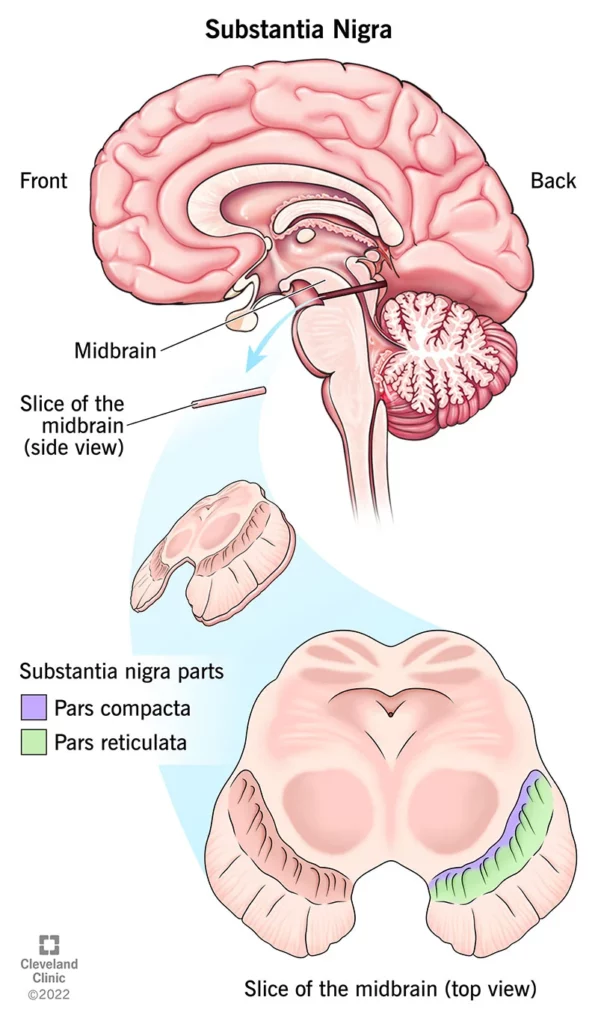
1. Dopamine Synthesis:
Dopamine is synthesized primarily in specific brain regions, notably the substantia nigra and ventral tegmental area (VTA). This intricate process starts with the amino acid tyrosine, which undergoes a series of enzymatic reactions to eventually become dopamine.
2. Storage:
Once synthesized, dopamine finds its home within vesicles nestled inside neurons residing in the VTA and substantia nigra. These vesicles act as secure storage units for the neurotransmitter.
What Triggers a Dopamine Release?
Dopamine release is triggered by various stimuli, including pleasurable experiences and anticipation of rewards. For example, ice cream, video games, music, sex, alcohol, and food.
Once released, dopamine binds to its receptors, setting off mood, motivation, and behavioral responses, a process extensively researched by Dr. Paul Greengard, a Nobel laureate specializing in nervous system signal transduction.
3. Release:
Dopamine is poised for action, awaiting triggers from various stimuli, such as pleasurable experiences or the anticipation of rewards. When activated, it is released from these vesicles into the synaptic cleft, the minuscule gap that separates neurons.
Where Dopamine Goes
As clarified by Dr. Mark von Zastrow, a renowned expert in receptor biology, dopamine communicates mainly through Two types of dopamine receptors D1 and D2 receptors, which sit on neurons’ surfaces across various brain regions.
D1 and D2 receptors are part of the G protein-coupled receptor family, were originally named based on their discovery order as two subtypes of dopamine receptors.
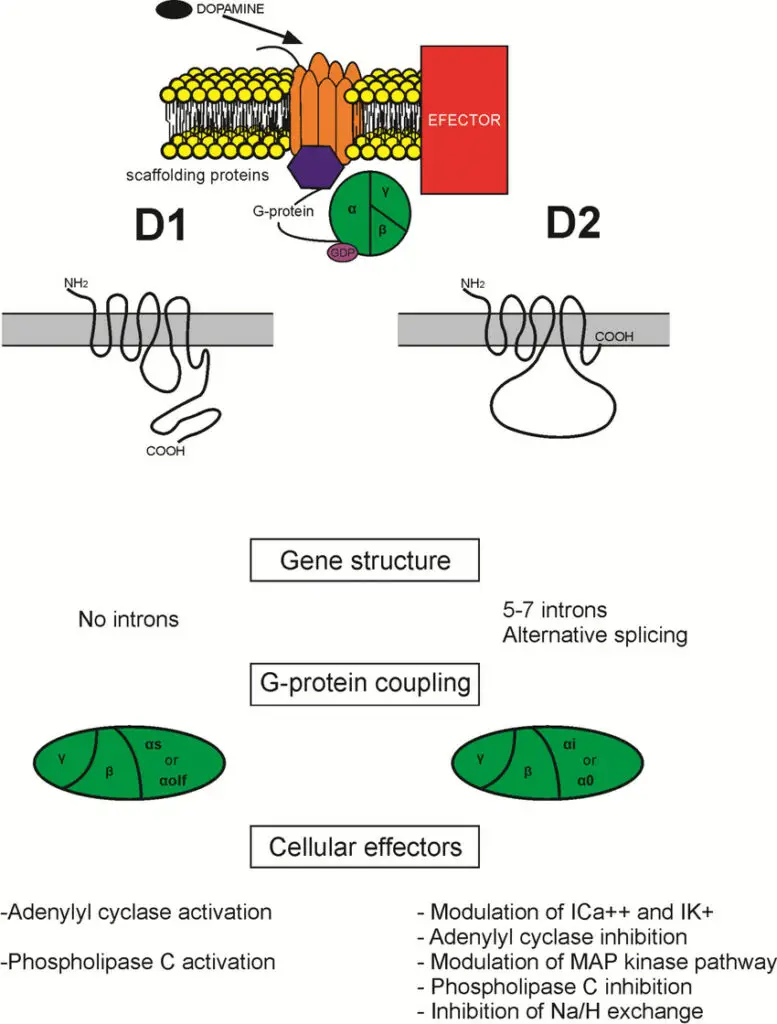
D1 receptors
Di receptors are often termed “stimulatory,” as they activate pathways leading to increased cellular activity. They are present in brain regions such as the prefrontal cortex, nucleus accumbens, and striatum.
D2 Receptors
In contrast, D2 receptors, initially considered “inhibitory,” tend to decrease cellular activity. They are widely distributed in the brain, found in areas like the striatum and limbic system.
4. Binding to Receptors:
In the synaptic cleft, dopamine molecules seek out specific dopamine receptors located on the surface of receiving (postsynaptic) neurons. Among the diverse dopamine receptors, D1 and D2 receptors are the primary players in this binding process.
5. Signal Transduction:
Upon successful binding, dopamine sets off a chain reaction of signal transduction pathways within the postsynaptic neuron. These pathways can result in alterations to the neuron’s electrical activity and even trigger the release of other neurotransmitters.
6. Neural Effects:
The activation of dopamine receptors can have multifaceted effects on the postsynaptic neuron. These effects span mood, motivation, behavior, and cognitive functions. It’s essential to note that these outcomes depend on the context and can range from excitatory to inhibitory.
Where Dopamine Ends
As observed by Dr. Randy D. Blakely, a prominent authority in neurotransmitter transporters, once dopamine fulfills its role in brain signaling and regulation, it undergoes a process called “re-uptake“.
Reuptake serves as the brain’s cleanup crew, preventing prolonged dopamine signals. Think of it as restoring order after a party.
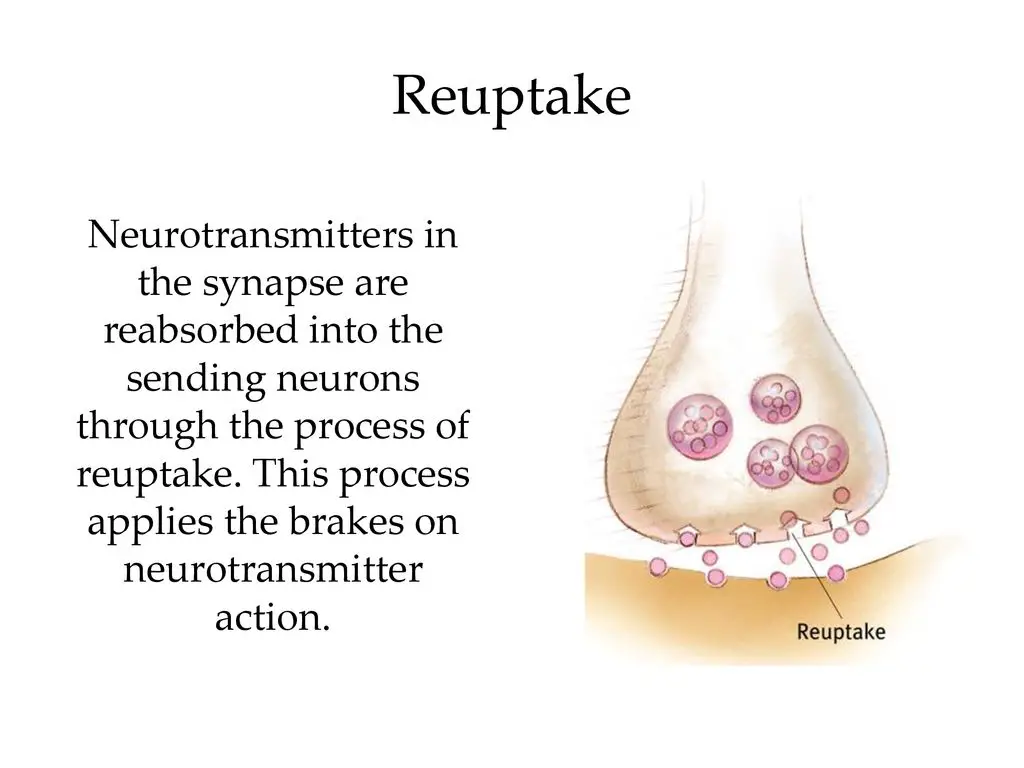
Reuptake is a vital neurobiological mechanism that plays a fundamental role in maintaining the delicate equilibrium of neurotransmitter activity within the brain.
Reuptake takes left over dopamine molecules and ‘re-uptakes them back neurons where the dopamaine was released from. This ensures that dopamine concentrations revert to their baseline levels. The meticulous regulatory process known as re-uptake is common with all brain chemicals and is indispensable mechanical process for preserving the brain’s optimal functionality and preventing the undesirable consequences of prolonged dopamine signaling.
7. Re-uptake:
After fulfilling its role in neural communication, dopamine isn’t left to linger indefinitely. Instead, it undergoes reuptake, a process managed by the dopamine transporter (DAT) on the presynaptic neuron’s membrane. This mechanism ensures the retrieval of dopamine back into the presynaptic neuron.
8. Metabolism and Degradation:
Inside the presynaptic neuron, dopamine can follow different paths. It may undergo metabolism by enzymes like monoamine oxidase (MAO) or be converted into norepinephrine. These processes contribute to maintaining balanced dopamine levels in the brain.
9. Receptor Downregulation:
Prolonged exposure to elevated dopamine levels, often associated with certain drugs or addictive behaviors, can lead to downregulation of dopamine receptors. This adaptive response reduces the brain’s sensitivity to dopamine, contributing to tolerance.
10. Homeostasis:
The brain’s ultimate goal is to maintain equilibrium in the dopamine system to ensure normal brain function. Dysregulation of dopamine levels can lead to various neurological and psychiatric disorders, emphasizing the critical role of this neurotransmitter in our overall well-being.
Final Thoughts: Dopamine In The Modern World
Dopamine critically influences our digital behaviors, particularly in smartphone use, social media interactions, and news consumption, all amplified by sophisticated algorithms.
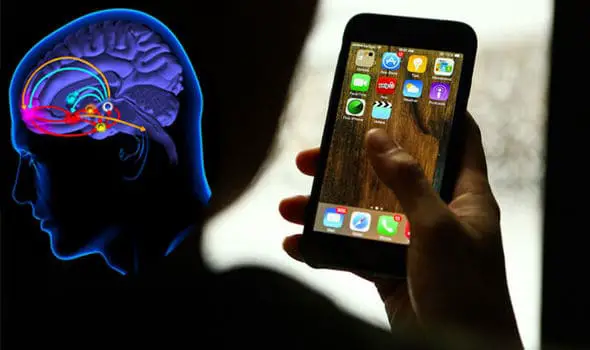
Notifications and social media platforms are designed to trigger dopamine releases, fostering habitual engagement and exploiting our desire for social validation. Experts like psychologist Dr. Larry Rosen (“The Distracted Mind,” 2016) and Dr. Brian A. Primack, a mental health and social media specialist (“Social Media Use and Perceived Social Isolation,” 2017), have examined these dynamics.
Algorithms enhance this effect by tailoring content to our preferences, a phenomenon explored by behavioral economics expert Dr. Ramón Cobo-Reyes. AI further maximizes dopamine responses by predicting interests based on our online behaviors, as discussed by ethics and robotics specialist Dr. Kathleen Richardson (“Ethics and the Artificial Intelligence Revolution,” 2019).
These technologies, while transformative, raise ethical questions about dopamine manipulation for engagement, emphasizing the need to balance tech advancements with mental well-being.
Loved what you read?
Hit that share button and let the world in on the secret – we’d be thrilled!
Got thoughts? We’re all ears for your feedback, corrections, or a good old chat. Don’t be shy; drop us a line.
And hey, don’t miss out on our curated list of must-reads in the recommended books section.
Big thanks for diving in with us today!


